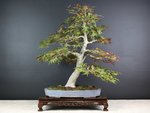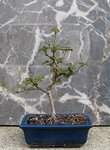markyscott
Imperial Masterpiece
Wait, what?! Damn it! Now you tell me. Why didn’t someone tell me sooner... *goes outside to work on trees*.
And here I’ve also been watering my trees frequently, like some kinda fool. Can finally stop wasting water..
But, seriously, great thread, great read. It should be of no consequence but I’m doing similar actions to a Acer P “Beni Maiko”, and a European hornbeam at the moment. Not as experiment, as just normal and best practice. But I’m taking pics, if they can be of any use. Awaiting response from them currently.
Also perhaps more useful, my other Acer P, on some large sacrifice branches left to grow, unpruned or defoliated, started to push a second flush of growth. As far as I see it, this is just purely out of good vigour and strength. So It shows that you may even see this second flush, whether you prune, defoliate, or do nothing. Always loads of variables at play!
But as a very simplified statement, I completely agree with you. And overall I think it’s better for the complete health of the tree, to partially defoliate or leaf prune, to allow air and light in to the trees inner structure.
Thank you CD - I’m glad you got something out of it!
- S

























